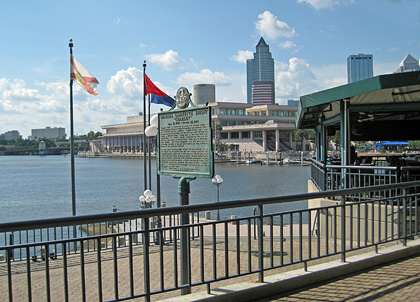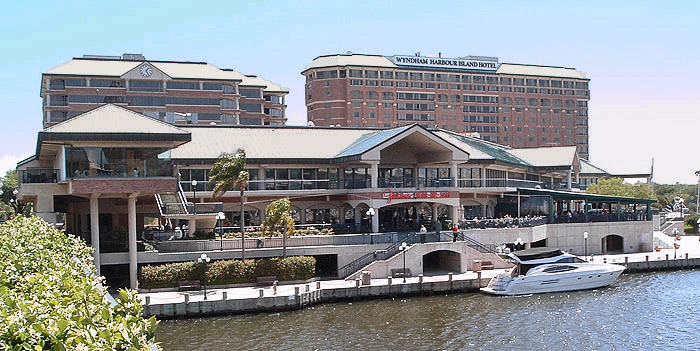|
|
|
|
|
The Harbour Island people mover was an automated guide way transit service used to carry visitors between downtown Tampa and Harbour Island across the Garrison Channel. Developed and designed for the Beneficial Corporation by Railway Systems Consultants, Ltd. using Otis Transportation Systems, the people mover was completed at a cost of $7 million. The 2,500-foot concrete guideway was elevated and spanned the Garrison Channel and the Crosstown Expressway along Franklin St.; it used a cable drive to move the cars. Operating between 7:00am and 2:00am, the Harbour Island people mover made approximately 620 trips per day with a maximum capacity of 100 passengers per trip. The system ran in a north–south direction between the downtown station located on the third level of the Old Fort Brooke parking garage and its southern terminus at the shops of Harbour Island. |
|
EARLY HISTORY OF THE
HILLSBOROUGH BAY ISLANDS Several low-lying islands and mudflats occupied Hillsborough Bay before improvements began in the early 1900s. The islands first appeared nameless on the earliest sixteenth century Spanish maps of Tampa and Hillsborough Bays. Later, the islands were included as part of the Fort Brooke military reservation created in the 1820s, and it is probably during the Fort Brooke years that the larger of the two islands picked up its first name--Depot Key. Various other names appeared through the years, including Rabbit Island, Big and Little Islands, Grassy Islands, and eventually, Big Grassy and Little Grassy Islands. From 1860 though the late 1800s, various portions of these islands were bought and sold by individuals such as Wm. Whitaker, W.C. Brown, Wm. B. Henderson, the city of Tampa, and D. P.Davis.
At
right: A 1915 Sanborn fire insurance map of downtown and
Hillsborough Bay showing West Grassy Island, Seddon Island and Depot
Key.
|
|||||
|
The development of Tampa's port was an ongoing
duel between railroad companies, shipping companies and the public.
It is no surprise to learn that the Corps of Engineers builds harbors,
canals, dams and other earth-moving projects, but what is not as
well-known is the Corps’ role in protecting the public from private
interests gaining a monopoly from its projects. The Corps’ development
of Tampa Bay was a case in point. Over the early years, as each segment
of the bay project was built by private enterprise, it fell under the
control of the railroads or the shipping companies. Finally, when port
space was nearly gone, the Corps devised a plan to allow the general
public to share in the benefits of the Tampa Bay port development. Thus,
it was the Corps of Engineers which provided Tampa with its municipal
wharves. |
|||||
Port development on Tampa Bay was given its
first boost in 1880, when the Rivers and Harbors Act of that year
authorized a 19-foot deep channel to Port Tampa and an 8-foot deep
channel to the mouth of the Hillsborough River in Tampa. It was ten
years later, however, before these improvements were completed.
Completion of this project put Port Tampa on the map but left Tampa
woefully lacking in the ability to accommodate larger vessels. Ships
were required to anchor at Port Tampa and then
transport their passengers and cargo to and from Tampa in smaller
vessels. To take advantage of the deeper channels, the Henry B. Plant
System extended the railroad from Tampa across the Interbay Peninsula to
Port Tampa. This provided Plant's steamers, the Mascotte and Olivette,
direct connections with its rail terminal. This nine-mile extension and
other facilities to accommodate these ocean vessels were completed in
1888. It was not until 1908 that Tampa's pretensions as a port of
consequence was assured by the completion of a channel 20 feet deep and
150 feet wide and a corresponding turning basin. |
|||||
| In the early 1900s, W. L. Seddon was the chief engineer for the Seaboard Air Line railroad. Seddon devised a plan to improve Tampa's port at Hillsborough Bay and in 1906, a public hearing was held to plan the new port. Seddon's plans were adopted and under his supervision, his company dredged a channel which cut through Little Grassy Island, leaving a small portion of it on the west, and the majority of the island on the east which was then named Seddon Island. Little Grassy Island was so low-lying that it usually disappeared under a strong high tide, but Big Grassy Island generally remained dry. Both islands were completely covered by water during the 1921 hurricane. In 1926, Big Grassy Island and the western remnant of Little Grassy Island, along with the mudflats in between, would be filled in by D. P. Davis for development of Davis Islands. |
|
||||
|
|
The original Seddon Island contract included provisions of a steel lift bridge, wharves, warehouses, railroad spurs and a phosphate elevator. The bridge was a 187-ft. span designed by the Scherzer Rolling Lift Bridge Company of Chicago. The bridge was installed in 1908 and provided railroad and vehicular access to the island. |

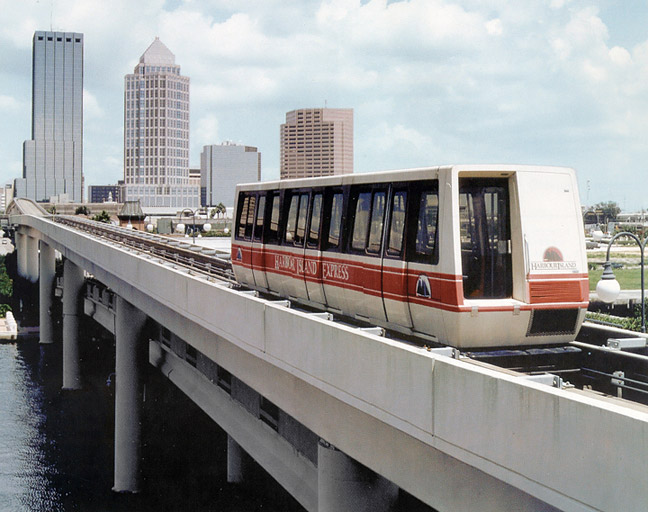

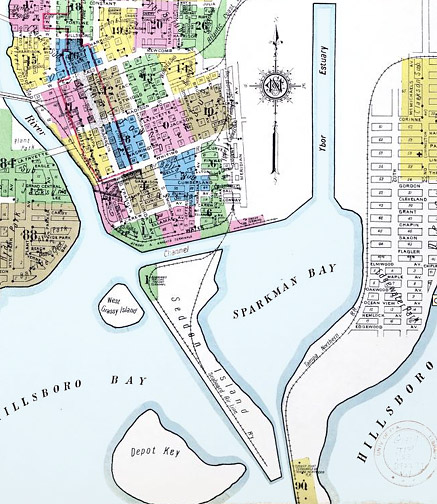
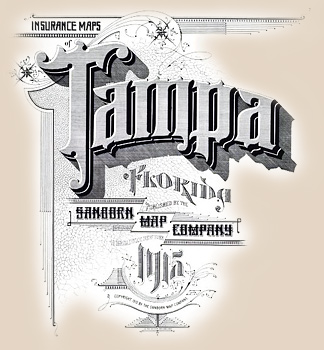
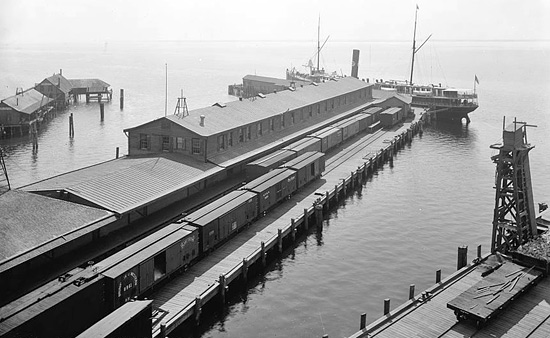
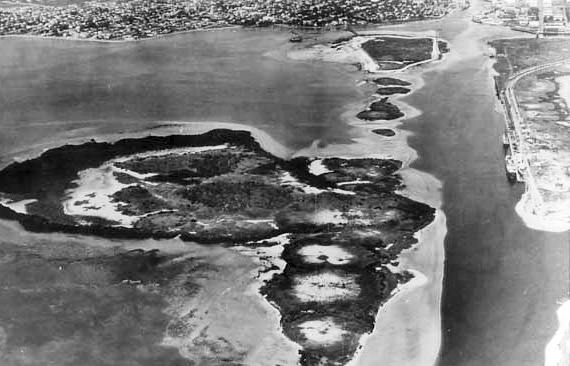
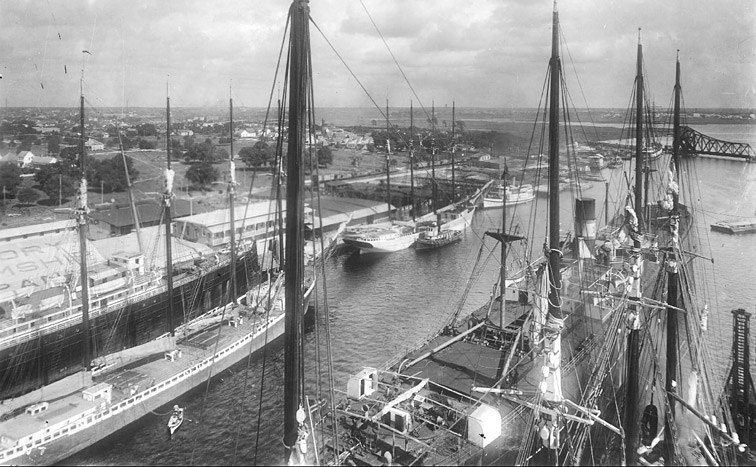
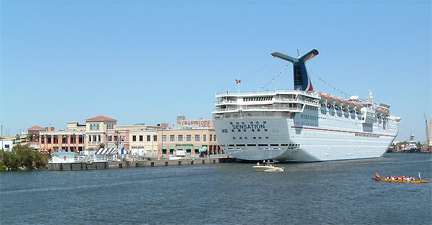 This
area is now Channelside, the St. Pete Times Forum, the Tampa Bay
History Center, the cruise ship terminals and the Florida Aquarium.
This
area is now Channelside, the St. Pete Times Forum, the Tampa Bay
History Center, the cruise ship terminals and the Florida Aquarium.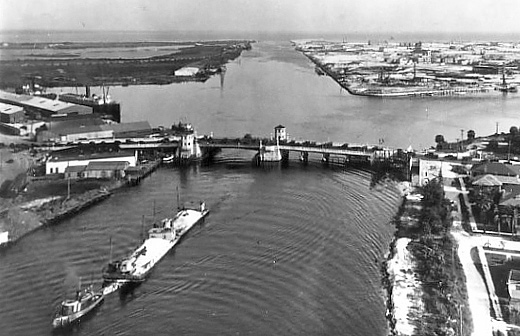
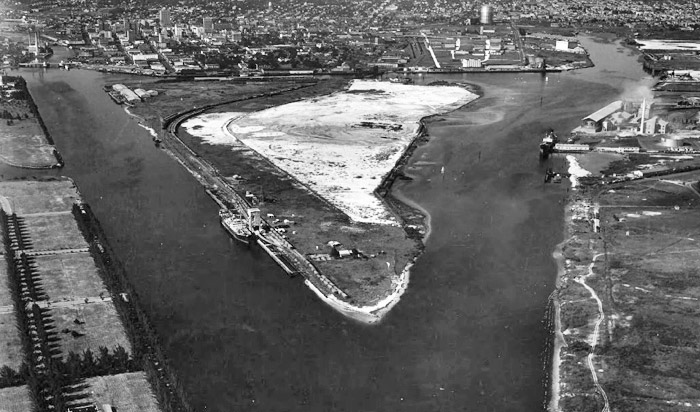
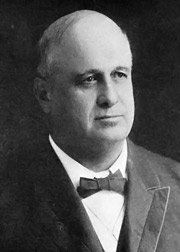
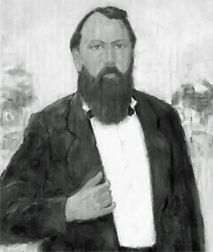
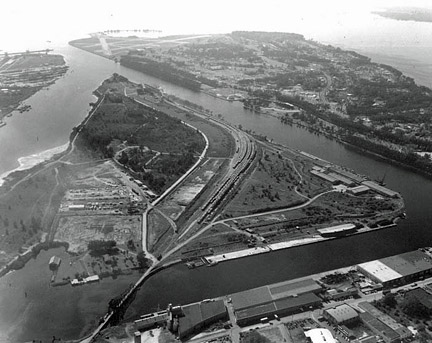
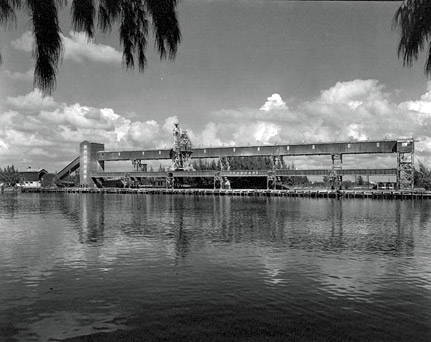
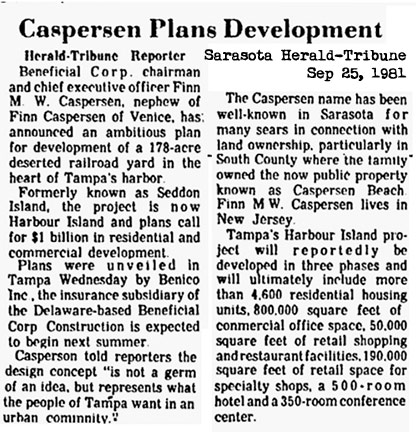
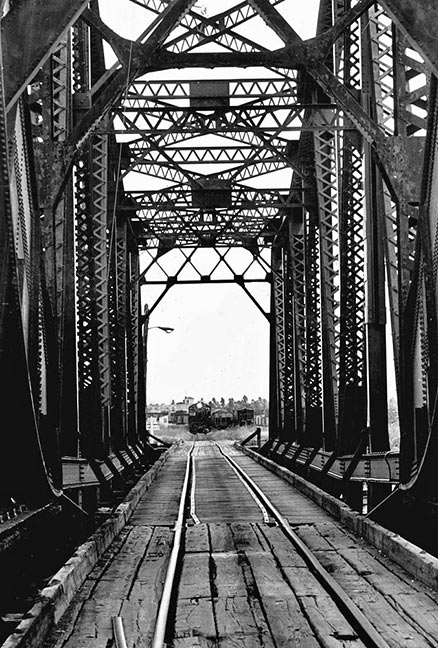
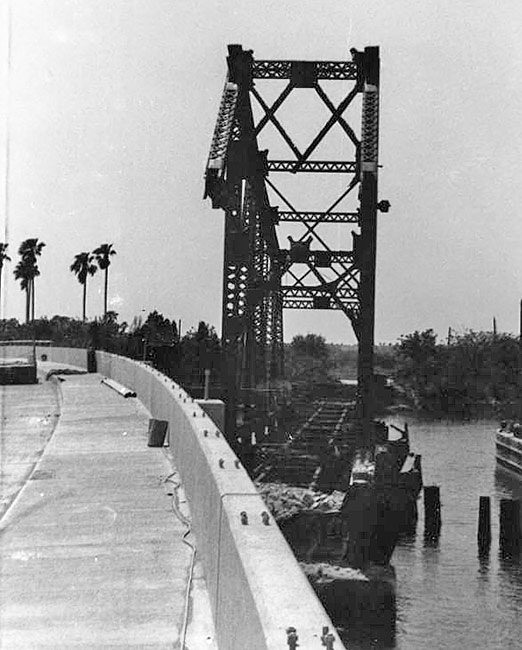
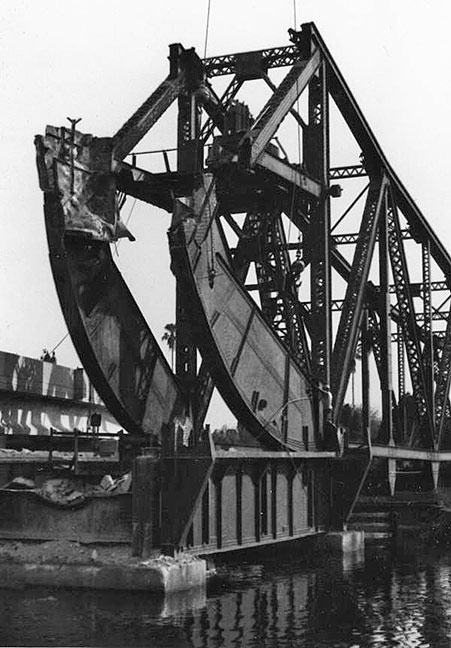
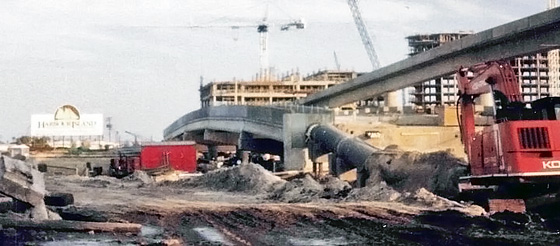
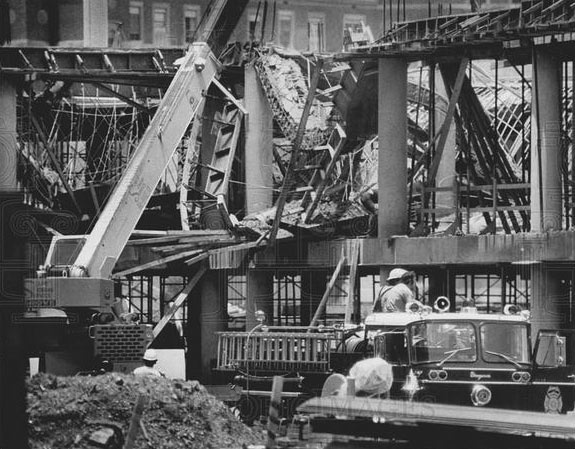
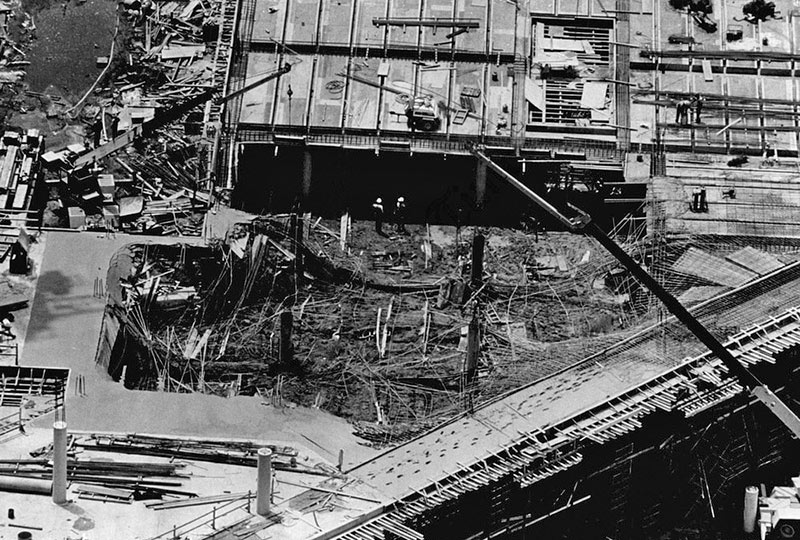
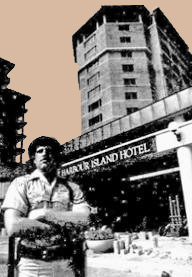
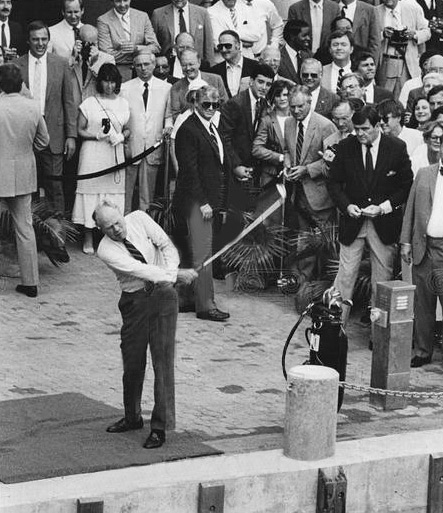
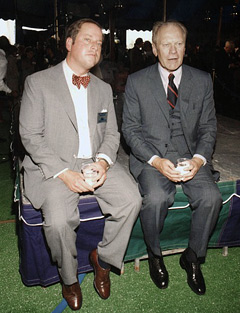
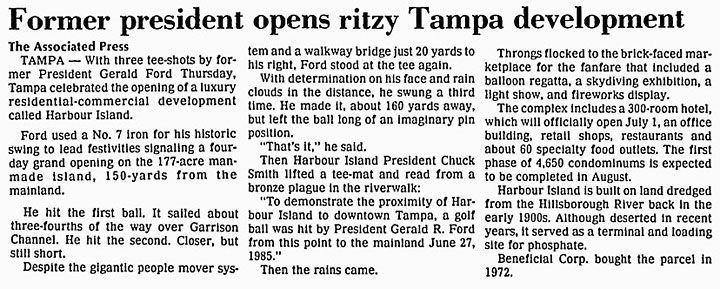
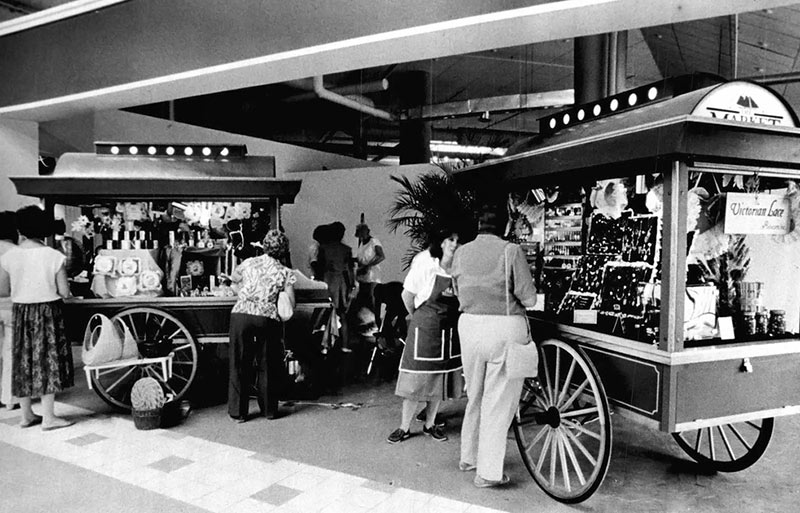

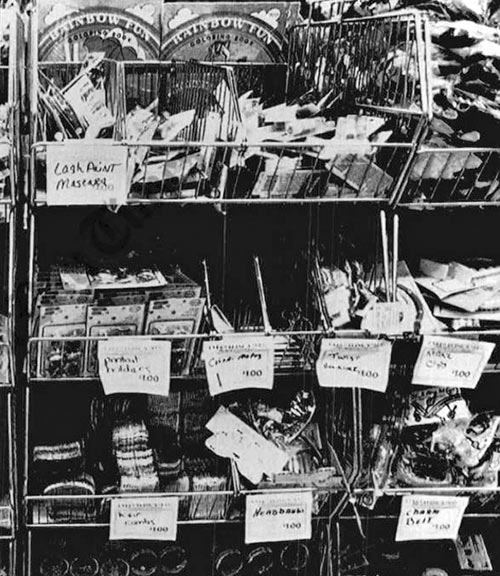
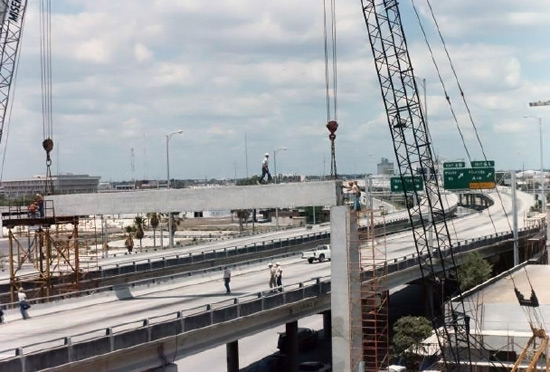
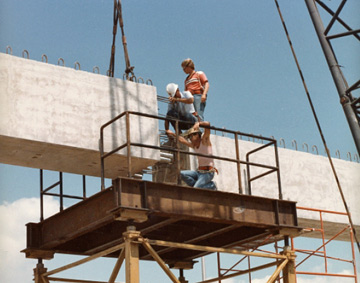
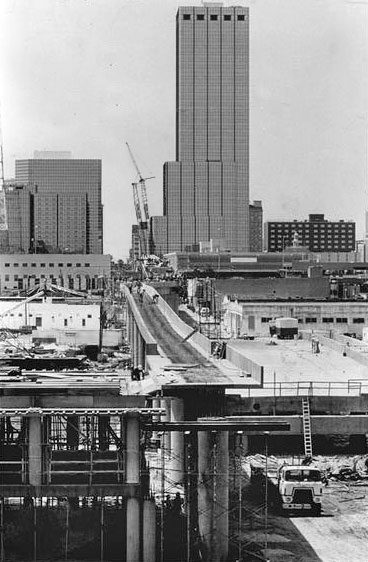
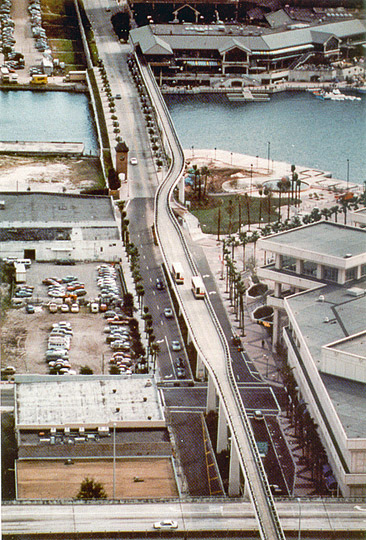
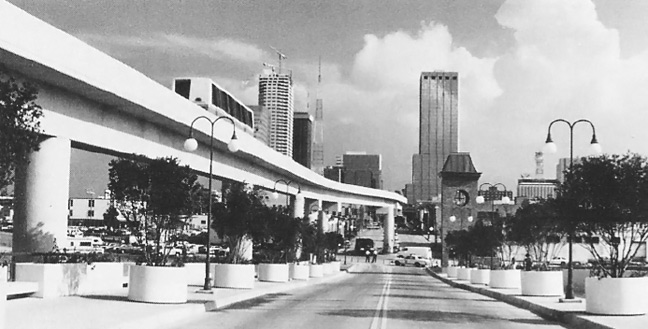
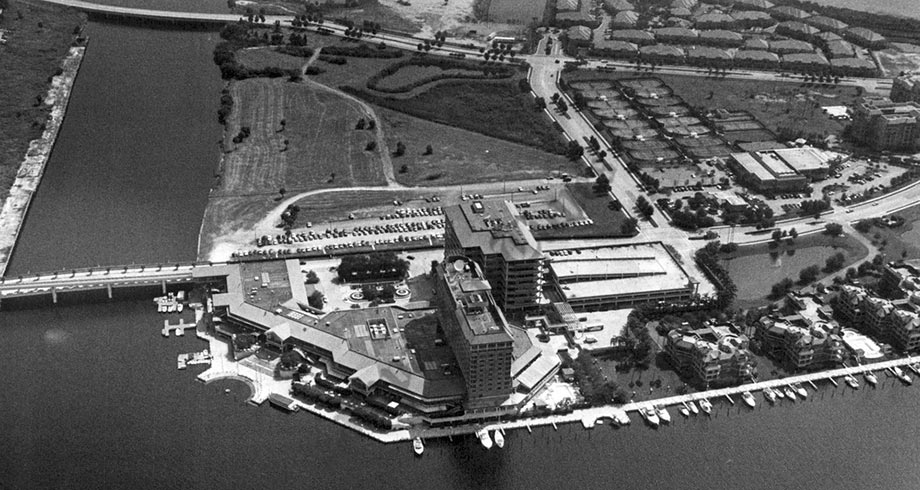
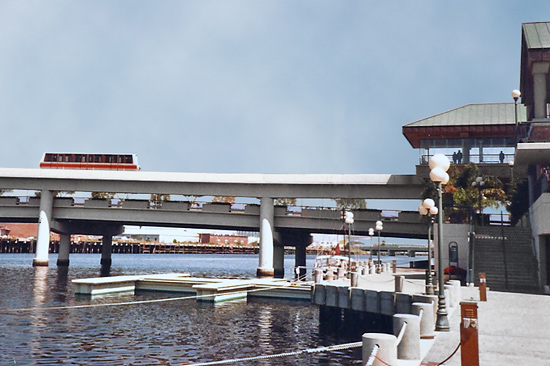
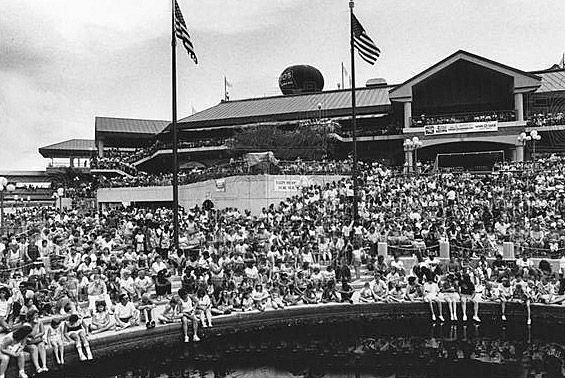
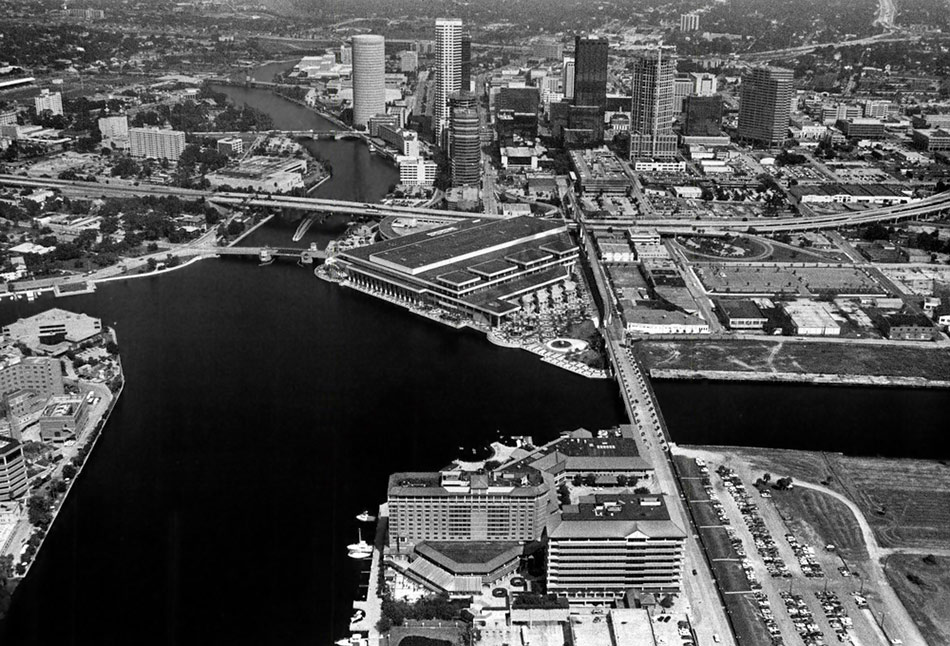
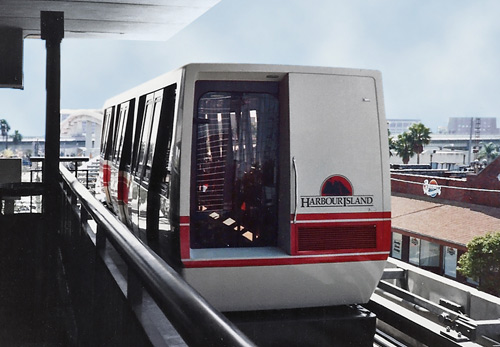
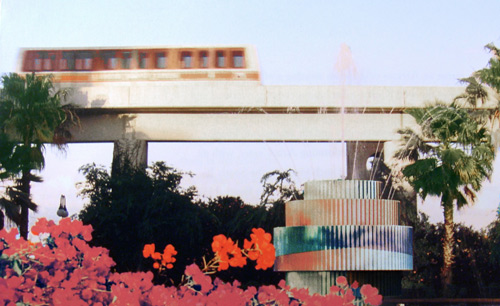
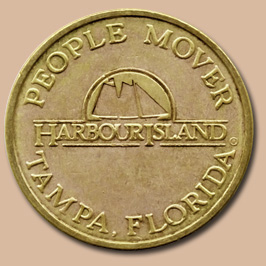
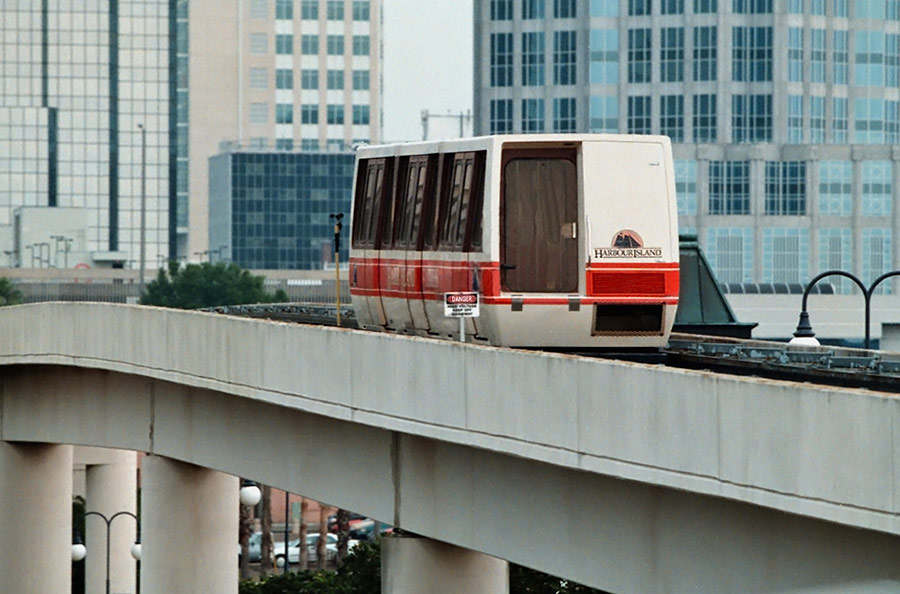
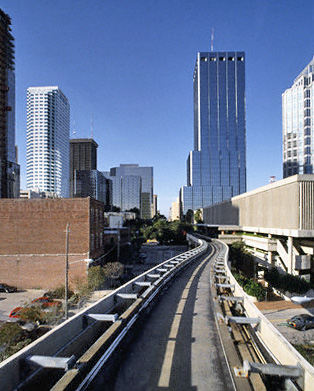
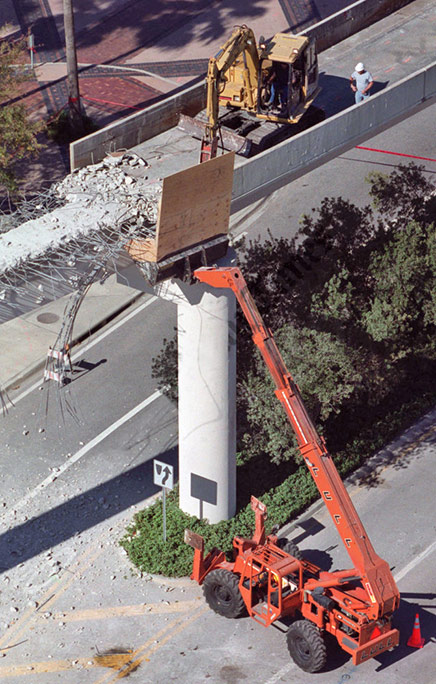

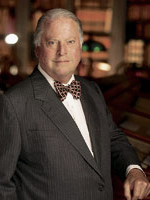 Finn
Caspersen had envisioned Harbour Island as a bustling waterfront with
offices, shops and restaurants, much like Baltimore's Inner Harbor. But
the development didn't progress as expected. He remained chairman of
Beneficial until 1998 when he sold the consumer-finance company to
Household International Inc. for more than $8 billion. His father,
Olaus W. Caspersen, had joined Beneficial in 1920 and ran the company for
18 years. Finn Caspersen was paid almost $24 million in severance and
other payments from the sale to Household, which became HSBC Finance Corp.
The Chicago-based Household International began selling parcels of land to
various builders, which ultimately helped to diversify the island's
offerings. That's when real estate sales on the island took off.
Builders rushed to build luxury homes for wealthy executives who could
walk across a bridge to the Channelside District. The original plan called
for residential areas to consist solely of condominiums -- more than 4,500
of them. But when the dust settled from the final construction, there were
over 1,000 condominiums, 500 single-family homes and townhomes, and more
than 1,200 apartments. Caspersen then split his time between Jupiter
Island on Florida's east coast, where he served on the Town Commission,
and at his home in Westerly, RI.
Finn
Caspersen had envisioned Harbour Island as a bustling waterfront with
offices, shops and restaurants, much like Baltimore's Inner Harbor. But
the development didn't progress as expected. He remained chairman of
Beneficial until 1998 when he sold the consumer-finance company to
Household International Inc. for more than $8 billion. His father,
Olaus W. Caspersen, had joined Beneficial in 1920 and ran the company for
18 years. Finn Caspersen was paid almost $24 million in severance and
other payments from the sale to Household, which became HSBC Finance Corp.
The Chicago-based Household International began selling parcels of land to
various builders, which ultimately helped to diversify the island's
offerings. That's when real estate sales on the island took off.
Builders rushed to build luxury homes for wealthy executives who could
walk across a bridge to the Channelside District. The original plan called
for residential areas to consist solely of condominiums -- more than 4,500
of them. But when the dust settled from the final construction, there were
over 1,000 condominiums, 500 single-family homes and townhomes, and more
than 1,200 apartments. Caspersen then split his time between Jupiter
Island on Florida's east coast, where he served on the Town Commission,
and at his home in Westerly, RI.
